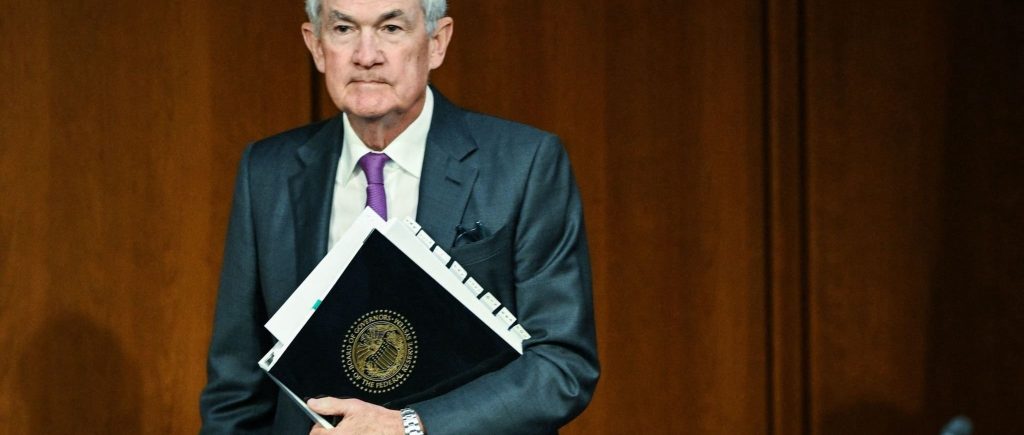Despite his refusal to give precise timing or extent hints, Fed Chair Jerome Powell set the foundation for future interest rate reductions on Friday. During the Fed’s annual retreat in Jackson Hole, Wyoming, the Chair of the Board of Directors declared, “The time has come for policy to adjust.” This was very much anticipated.
Powell spent most of the speech analyzing the causes of the inflation spike in addition to the current state of affairs. Interest rate reduction are on the horizon, according to Fed Chair Powell: “The time has come for policy to adjust.” Though he did not give specific details about the timing or scope of the cuts, Federal Reserve Chair Jerome Powell set the foundation for future interest rate reductions on Friday.
In his eagerly awaited keynote speech at the Federal Reserve’s annual meeting in Jackson Hole, Wyoming, the Fed Chair stated, “The time has come for policy to adjust.” “The path of travel is obvious, and the balance of risks, incoming data, and changing outlook will determine when and how quickly rates are cut.”
Powell concentrated as much on looking back at what caused the inflation that resulted in an aggressive string of 11 rate hikes from March 2022 through July 2023, as the markets were hoping for guidance on the path of monetary policy.
Jerome Powell acknowledged the progress made in reducing inflation, though, and stated that the Fed can now shift its attention equally to ensuring that the economy maintains a level of full employment, the other half of its dual mandate. There has been a notable decrease in inflation. Conditions have improved from before the epidemic and the labour market is no longer hot, according to Powell. Supply limitations are now commonplace. Additionally, the relative dangers to our two mandates have shifted.
He further pledged that “we will do everything we can” to guarantee that the labour market remains robust and that inflation reduction efforts continue. Treasury rates plummeted as Powell started to talk, and stocks continued to rise. As per FedWatch from the CME Group, traders increased the likelihood of a possible half-point reduction to almost 1-in-3, although they kept a 100% possibility of at least a quarter percentage point rate cut in September. In a nutshell, Chair Powell declared that the mission—which has been centered on inflation for the past two years—has been achieved in this valedictory speech.
Powell Sees Progress Toward Goals
The inflation rate is steadily returning, if not quite to the Fed’s 2% target, as of the address. The most recent reading of the Fed’s preferred inflation indicator was 2.5%, down from 3.2% a year earlier and significantly below the record of over 7% in June 2022.
Simultaneously, the jobless rate has gradually increased, reaching a peak of 4.3% lately, and staying in a region that would typically set off a tried-and-true recessionary indication. Powell did, however, attribute the increase in unemployment to a slower hiring rate and an increase in people joining the workforce as opposed to an increase in layoffs or a general decline in the labour market.
“Our objective has been to restore price stability while maintaining a strong labour market, avoiding the sharp increases in unemployment that characterized earlier disinflationary episodes when inflation expectations were less well anchored,” he said. “While the task is not complete, we have made a good deal of progress toward that outcome.”
Markets are expecting the Fed to start cutting in September, though Powell made no mention of when he thinks policy easing will begin. Minutes from the July open market committee meeting, released Wednesday, noted that a “vast majority” of officials believe a September cut will be appropriate so long as there are no data surprises.
Powell seemed obviously dovish. He bought the option to do whatever he needs to do next month, which is clearly an ease. Some observers don’t think the bar for 50 basis points is particularly high.
In addition to assessing the current state of play, Powell took considerable time in the speech to evaluate what led to the surge in inflation — hitting its highest level in more than 40 years — as well as the Fed’s policy response and why price pressures have eased without a recession.
Good Ship Transitory
When inflation first began to rise in early 2021, he and his colleagues — as well as many Wall Street economists — dismissed it as “transitory” and caused by Covid-related factors that would abate.
“The good ship Transitory was a crowded one,” Powell quipped to laughter form attendees, “with most mainstream analysts and advanced-economy central bankers on board. I think I see some former shipmates out there today.”
When it became clear that inflation was spreading from goods to services, the Fed pivoted and began hiking, ultimately adding 5.25 percentage points to its benchmark overnight rate that had been around zero following emergency cuts in the early pandemic days.
The rise in inflation, Powell said, was “a global phenomenon,” the result of “rapid increases in the demand for goods, strained supply chains, tight labour market, and sharp hikes in commodity prices.”
He attributed confidence in the Fed and well-anchored expectations that inflation would would ultimately ease to the economy avoiding a sharp downturn during the hiking cycle.
“The FOMC firmly demonstrated our commitment to restoring price stability by carrying out our responsibilities without hesitation,” he stated. There is still “much to be learned” from the recent experience, but one key lesson is that “anchored inflation expectations, reinforced by vigorous central bank actions, can facilitate disinflation without the need for slack.” That’s how I interpret the circumstances. Your mileage might vary,” he stated.

 Noor Trends News, Technical Analysis, Educational Tools and Recommendations
Noor Trends News, Technical Analysis, Educational Tools and Recommendations




